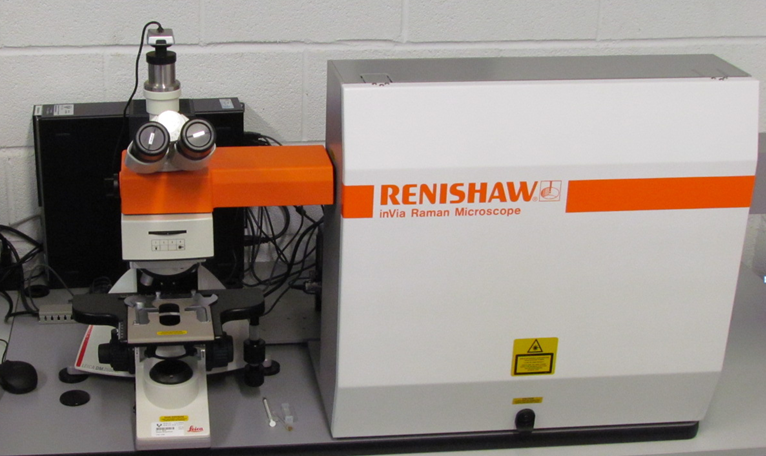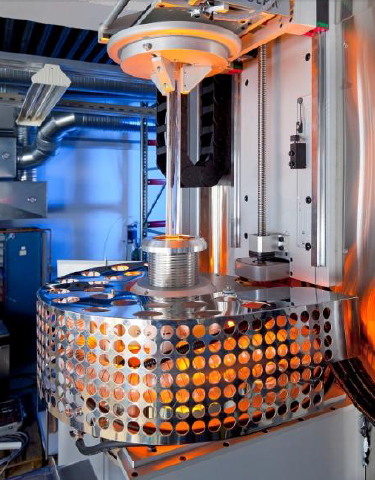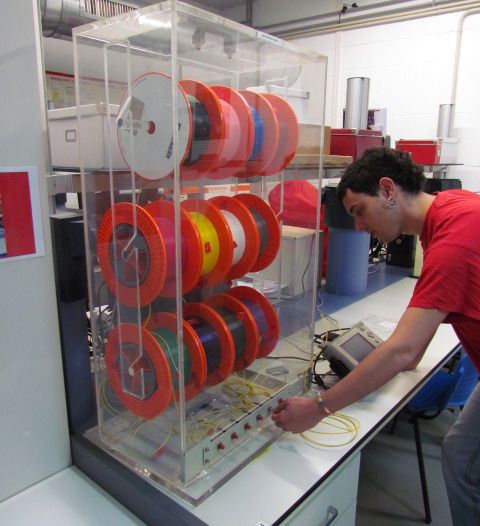Facilities / Lab
Applied Photonics Research Laboratory

This contains a wide variety of facilities for different types of characterizations of both passive and active POFs (attenuation and bandwidth measurements, misalignments losses, fluorescence emissions…).
- Raman microscope (Renishaw inVia)
- Femtosecond pulse width laser (Spectra Physics Mai Tai HP)
- Nanosecond Q-switched Nd:YAG laser (EKSPLA NL30HL)
- Broadband light source (Energetiq LDLS)
- Dye laser (Spectra physics Duo220)
- Ultrafast Streak Camera (Hamamatsu)
- Pulse selector (Spectra physics 3980)
- Frequency doubling unit (Radiantis Inspire Blue)
- UV-Vis Spectrophotometer (Agilent/Varian Cary 50)
- 4 optical tables (1800mm x 1200mm)
- Vibration-controlled optical table (3000mm x 1500mm)
- Spectrometers (Ocean USB4000 and Avantes AvaSpec 2048)
- Oscilloscopes
- Microscopes
Fiber Drawing Facility

Fibre Drawing Facility houses a state-of-the-art manufacturing tower for conventional optical fibres and photonic crystal fibres.
This facility is located outside of Faculty of Engineering, Bilbao.
Fiber Drawing Facility Address
Faculty of Science and Technology
Nave Feder / Feder nabea
Barrio Sarriena s/n
48940 Leioa - Bizkaia
Optical Communications Laboratory

The core course Optical Communications II is taught in this laboratory, in which undergraduates receive a global view of the main measurement techniques used in Optical Communications and they complete the knowledge acquired in the course Optical Communications I.
Students learn aspects like:
- Characterization of a fiber link using an OTDR
- Power measurements and characterization of passive elements.
- Measurement of interesting parameters in multimode fibers
- Laser diode characterization
- Michelson interferometer and polarization of plane waves
- Propagation in plane guides
- WDM communication systems
